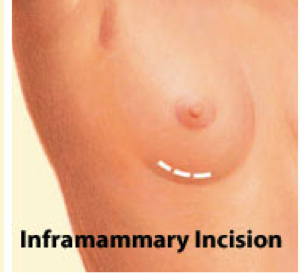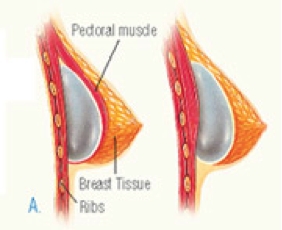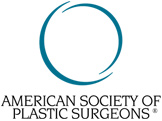Breast Augmentation (Breast Enlargement) – Oklahoma City
What is breast augmentation surgery?
Breast augmentation surgery consists of using breast implants to increase the size of your breasts and will restore breast volume that has been lost after pregnancy or weight reduction.
Breast augmentation is clinically referred to as augmentation mammaplasty.
Breast augmentation can:
- Increase fullness and projection of your breasts
- Improve the balance of your figure
- Enhance your self-image and self-confidence
Breast implants may also be used for breast reconstruction after mastectomy or injury.
What breast augmentation surgery won’t do
Breast augmentation will not correct breasts that are severely drooping. If you want your breasts to be lifted due to sagging or to look fuller, you may be required to have a breast lift in conjunction with breast augmentation.
Breast lifting can be done at the same time as your augmentation or may require a separate operation. Your plastic surgeon will assist you in making this decision.
Preparing for breast augmentation surgery
In preparing for breast augmentation surgery, you may be asked:
- Get a blood test
- Take certain medications or adjust your current medications
- Stop smoking
- Avoid taking aspirin and certain anti-inflammatory drugs as they can increase bleeding
Breast augmentation surgery may be performed in outpatient or a surgical center or a hospital.
If your breast augmentation is performed in an outpatient basis, make sure to arrange for someone to drive you to and from the surgery and to be able to stay with you over night the first night following surgery.
Breast augmentation risks and safety
The decision to have plastic surgery is completely personal and you will have to decide if the results will fulfill your goals and if the potential complications and risks of breast augmentation are acceptable.
You will be asked to sign consent forms to ensure that you fully understand the procedure and any risks and potential complications.
Possible breast augmentation surgery risks include:
- Anesthesia risks
- Bleeding
- Infection
- Changes in nipple or breast sensation
- Poor scarring of skin
- Wrong or faulty position of the implant
- Implant leakage or rupture
- The formation of tight scar tissue around the implant (capsular contracture)
- Fluid accumulation (seroma)
- Wrinkling of the skin over the implant
- Pain, which may persist
- Possibility of revisional surgery
These risks and others will be fully discussed prior to your consent. It’s important that you discuss all your questions with your plastic surgeon prior to the surgery.
Breast implant safety
Breast implants do not impair breast health.
Careful reviews of scientific research by independent groups such as the Institute of Medicine have found no link between breast implants and autoimmune or other systemic diseases.
Other important considerations:
- Breast implants are not guaranteed to last a lifetime and future surgery may be required to replace one or both implants
- Pregnancy, weight loss, and menopause may influence the appearance of augmented breasts over the course of your lifetime
- Breast augmentation requires regular examinations of your breasts’ health and to evaluate the condition of your breast implants
Types of breast implants
Saline breast implants
Saline breast implants are filled with sterile salt water. Should the implant shell leak, a saline implant will collapse and the saline will be absorbed and naturally expelled by the body.
Saline breast implants provide a uniform shape, firmness and feel, and are FDA-approved for augmentation in women age 18 or older.
Silicone breast implants
Silicone breast implants are filled with silicone gel. The gel feels a bit more like natural breast tissue. If the implant leaks, the gel may remain within the implant shell, or may escape into the breast implant pocket. A leaking implant filled with silicone gel will not collapse.
If you choose silicone implants, you may need to visit your plastic surgeon regularly to make sure the implants are functioning properly. An ultrasound or MRI screening can assess the condition of breast implants.
Silicone breast implants are FDA-approved for augmentation in women age 22 or older.
Smooth breast implants
Smooth breast implants are the softest feeling. These implants can move with the breast implant pocket, which may give more natural movement.
Smooth implants may have some palpable or visible rippling.
Textured breast implants
Textured breast implants develop scar tissue to stick to the implant, making them less likely to move around inside of the breast and get repositioned.
Texturing offers some advantage in diminishing the risk of a tight scar capsule.
Implant manufacturers occasionally introduce new styles and types of breast implants, so there may be additional options available.
Whether you choose saline or silicone implants, it is important for you to monitor your breast implants and follow-up with your plastic surgeon for appropriate checkups.
Procedure steps
A breast augmentation procedure includes the following steps:
Step 1 – Anesthesia
Medications are administered for your comfort during the surgical procedure. The choices include intravenous sedation and general anesthesia. Your doctor will recommend the best choice for you.
Step 2 – The incision
Incisions are made in inconspicuous areas to minimize visible scarring. You and your plastic surgeon will discuss which incision options are appropriate for your desired outcome. Incision options include:
Incisions vary based on the type of breast implant, degree of enlargement desired, your particular anatomy and patient-surgeon preference.
Step 3 – Inserting and placing the breast implant
After the incision is made, a breast implant is inserted into a pocket either:
- Under the pectoral muscle (a submuscular placement), or
- Directly behind the breast tissue, over the pectoral muscle (a submammary/ subglandular placement)
The method for inserting and positioning breast implants depends on the type of implant, degree of enlargement desired, your body type and your surgeon’s recommendations.
Step 4 – Closing the incisions
Incisions are closed with layered sutures in the breast tissue and with sutures, skin adhesive or surgical tape to close the skin.
Over time the incision lines will fade.
Additional Information About Breast Augmentation:
Oklahoma City board certified plastic surgeon, Jeanette Padgett can help you achieve the breasts you’ve always wanted or regain the figure you once had through breast augmentation. Have you noticed that confidence in your appearance contributes to your self-image and self-assurance? Feeling your best can help you achieve personal goals in all areas of your life. Plastic surgery may be right for you if you know you’d like to take control of your appearance.
Cosmetic breast enhancement can alleviate your concerns about the size and shape of your breasts. You may choose breast implants to balance your breasts, to improve their contour, or to increase the overall proportions of your breasts. You can add volume to your breasts and add curves to you profile all in one procedure. Some women choose larger breasts to balance their overall appearance. Breast augmentation creates an attractive symmetry that suits your natural beauty.
Women in Oklahoma City have breast augmentation for many different reasons, including:
- Breasts have lost volume due to pregnancy, breastfeeding, or aging
- Breasts have always been smaller than desired
- Breasts look too small in proportion to the rest of your body
- Breasts have begun to sag due to aging, or after pregnancy or breastfeeding
- Breasts are not symmetrical (one breast is larger than the other)
- Clothes do not fit attractively
During your consultation, Oklahoma City plastic surgeon Dr. Padgett will discuss your concerns with you and explain the details of breast enlargement cosmetic surgery. She will guide you through the many options to consider, including breast implant type (saline or silicone gel breast implants), breast implant size and profile, implant texture, and breast implant surgical method.







December 12, 2022, 1:25 pm